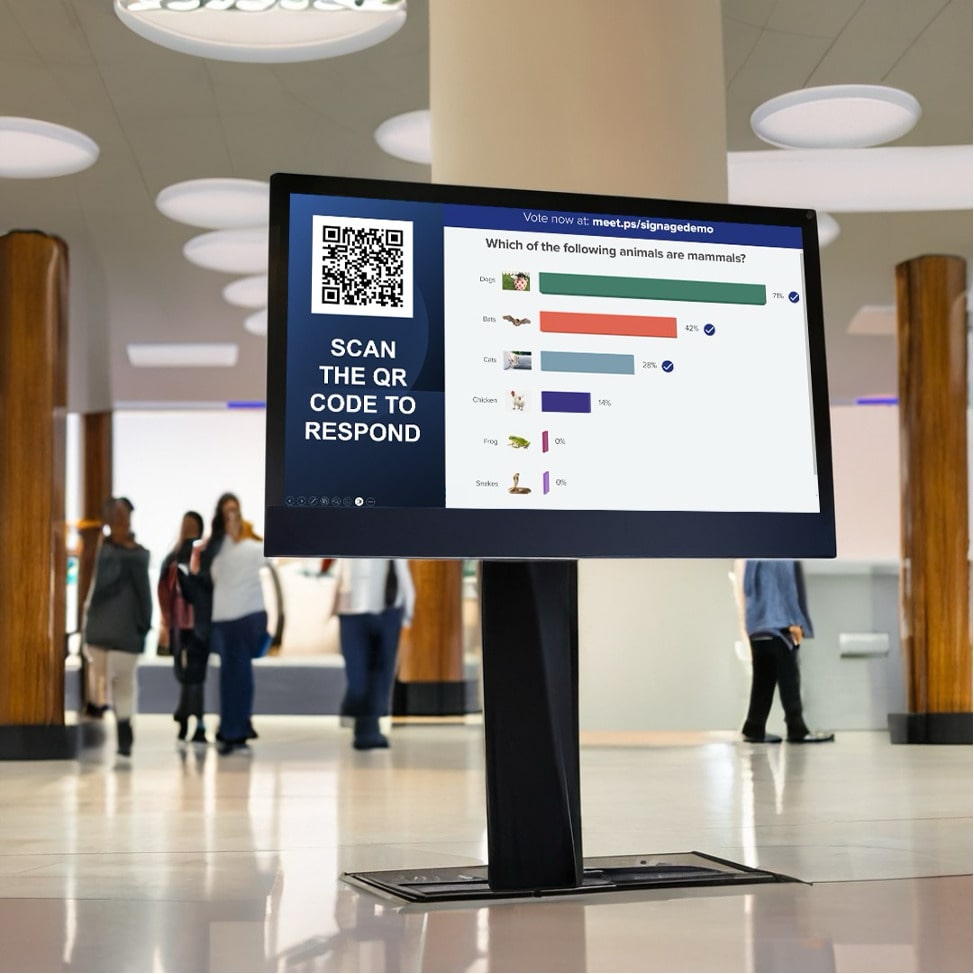Check this out: according to Statista, the economic impact of disruptive innovation is predicted to hit $11 trillion per year by 2025. Despite this fact, there are still tons of people out there who haven’t even heard of the theory of disruptive innovation yet.
Here’s the good news. If you’re searching for disruptive innovation examples, then you’ve come to the right place. Find out how to incorporate disruptive innovation in your leadership strategy below!
Being a disruptive and innovative leader is more important than ever before due to the current coronavirus pandemic. These are times when everything is uncertain and industries need big ideas to not just survive, but reshape and revitalize an entire industry. Think Airbnb.
With everyone rightfully fearing the spread of germs and trying to keep safe by social distancing, a lot of financial experts wondered if a company like Airbnb would be able to thrive even once the quarantine rules and restrictions were lifted. Would people want to rent a space in someone’s home? Would people even go on vacation anymore?
To combat the travel industry’s dramatically changing atmosphere, Airbnb’s CEO Brian Chesky announced a new cleaning protocol for hosts. This wouldn’t just ensure that guests are safe from COVID-19, but instilled trust in Airbnb during the world’s newfound focus on cleanliness.
Disruptive innovation leaders are not afraid of these kinds of challenges. Instead, they embrace them. So how can you apply this kind of thinking to your own company and your own leadership?
What Is Disruptive Innovation?
For those of you who aren’t sure what disruptive innovation is, we’ll start by explaining the disruptive innovation theory.
First of all, the official disruptive innovation definition was introduced to the world by the Harvard Business Review back in the mid-90s.
At that time, it was one of the most powerful revolutions in the leadership industry. Here’s the craziest part. Companies of all sizes praised disruptive innovation as the “guiding light” of their organizations. And yes, that includes major players such as:
- Intel
- Southern New Hampshire University
- Salesforce.com
Some scholars describe disruptive innovation as a way to shake up previous methods of success in a given industry. However, we think that there’s much more to it than that.
Here’s how to disrupt an industry. Smaller organizations with fewer financial resources compete against corporate giants. Then, they target neglected audiences to bring in more clients. The goal: to make themselves known in niche sectors, then use this momentum to get the ball rolling elsewhere!
Examples of Disruptive Innovation
Let’s face it: if you really want to build your leadership skills, it’s probably a good idea to take a look at a few examples of disruptive innovation.
Xerox – Targeting Small Customers
For instance, picture Xerox when it first got started. They charged huge corporations exorbitant prices to meet their productivity needs. Smaller customers like bowling league operators and librarians who also wanted to use Xerox’s services were out of luck.
Eventually, Xerox introduced more affordable copiers that could be used at home and in the workplace. By cornering the market on this new technology, Xerox became what it is today.
Uber – Targeting Commuters and Underserved Customers

Another great example of disruptive innovation is Uber’s business model. They didn’t target people that were “non-consumers.” Instead, they marketed to people who drove themselves or took public transportation on a regular basis.
Coincidentally, Uber was created in San Francisco, a city that heavily relied on hailing taxi rides. As time went on, more and more people chose to grab an Uber instead of hiring traditional taxi drivers. Not only that, but Uber appealed to underserved customers and lower-end clients too. The result was massive, astronomic success in the rideshare industry!
Incorporating Disruptive Innovation in Leadership
If you really want to rock the business world, try following the Four V’s of disruptive leadership.
The Four V’s
The four V’s according to Forbes include:
- Voracity
- Valiancy
- Variety
- Veracity
Voracious leaders are hungry for information about shifting trends in their industry. They are not afraid to ask important questions that might not agree with the needs of the market. This is the birthplace of disruptive innovation.
Valiancy is the bravery to lead your team to success through difficult times. Valiant leaders embrace change instead of rejecting it.
Variety means having an open mind about new services, processes, and products that will turn the market upside down.
Lastly, there’s veracity. Leaders with veracity are guided by dependability, credibility, and fairness. This is how smaller companies can build trust in their business communities.
Utilizing Technology
To be a disruptive leader, you’ve got to practice disruptive innovation. Here’s the breakdown. User-friendly technology has allowed small businesses to make a large splash in the mainstream market.
Thanks to online courses, business owners across various industries and business sizes can optimize their services. Fortunately, this has increased the pace of disruptive innovation in all sectors.
Take a look at the computer giant Compaq. They replaced minicomputers with personal computers. As a result, Compaq increased its revenue more than 10 times over. In a little over a decade, Compaq acquired DEC, its biggest archnemesis. Making use of innovative technology might be as simple as using a platform for better communication or a platform that can help collect employee feedback.
Be an innovative leader and hold truly engaging meetings with MeetingPulse.
Outside-The-Box Business Models
Another great outside-the-box business model to follow is Airbnb. As an online marketplace, Airbnb lets people from all of the world rent, find, and list accommodations for a small fee.
Here’s the kicker: they don’t own a single property. Rather, Airbnb works with hosts to fuel the supply and demand of the hospitality industry. Using a shared economy, homeowners make money by renting out extra space to relative strangers.
Creating a Culture of Disruptive Innovation
To create a culture of disruptive innovation, try:
Gathering Feedback
If you want to become a disruptive organization, you have to embrace risk-taking and experimentation. Surprisingly, your team could learn a lot from their previous failures. Corporate culture is the most important driver of disruptive innovation. Take on disruptive work projects that are a bit riskier than usual.
Create a work environment with transparent policies. Also, make staff members feel capable of sharing ideas. Next time you host an all-hands meeting, gather feedback from your staff members too.
Hosting Brainstorm Sessions

Create a digital and physical environment that sparks creativity among your employees. That way, they’ll be able to provide more inventive processes or ideas during your team brainstorming session.
We can’t emphasize this enough: establishing a setting that makes these innovative ideas possible is your goal. Allow your staff members to hold spontaneous brainstorming sessions in comfortable spaces. Additionally, give them the tools that they need to let the creativity flow.
With MeetingPulse, you can easily share documents and ask a question, initiating a discussion with Reddit-style upvoting and downvoting.
Listening to Your Employees
You can create a culture of disruptive innovation by connecting all staff members to your company mission. If you’re planning to moderate a panel discussion, be sure to listen to your team and reassure them that their words matter. Prepare to reinforce your company’s goal and share your strategy for reaching it.
Pro tip: link your employee’s capabilities to your business mission. Encourage your team to bring their disruptive ideas to the meeting room, no matter how big or small their role is!
Find out how to use MeetingPulse to collect valuable employee feedback.
How We Perceive Disruption
Here’s how we perceive disruption. For the uninitiated, there are three layers of the disruptive innovation process:
- Emerging into a new sector
- Finding a niche market
- Entering the mainstream market
If your company can follow these simple steps, you’ll be well on your way to disrupting the market of your choice. All that you need is a solid business model to make your emergence into an industry.
Once you can produce a unique product, building a dedicated following in a niche target market is easy. For instance, think about how Apple introduced the iPod and iTunes to the world. In case you didn’t know, this changed the MP3 industry and the Internet forever.
Of course, the success of your disruptive tactics depends on how the market perceives your product. As a newbie to the field, you’ve got to be able to manage the industry’s perception of your business as tightly as possible.
For example, consider TiVo. When they entered the game, they sought to build partnerships with the very companies that they were trying to overrun. What happened next is that TiVo introduced a new technology that completely shifted the ecosystem of the media industry as we know it.
On the other side of the coin, you can impact how your disruptive ideas are perceived by following these steps:
- Controlling how you share information about your innovation
- Removing all information barriers
- Increasing user compatibility
- Showing how your product is different from the competition
Better yet, try your hand at marketing to low-end or undiscovered markets. You just might gain the competitive edge that your business is looking for! Get all of your employees together and talk as a collective about what’s trending and what’s not, what industry patterns are fading away and what might just be on the cusp of success.
Learn From Our Disruptive Innovation Examples

If you own your own business, then there’s so much that you can learn from our disruptive innovation examples. Once you understand the definition of disruptive innovation, applying the Four V’s to your business model should be a breeze. You can create a culture of disruptive innovation in your office place too. Just stay up-to-date with technology and think outside the box!
Gather feedback, hold brainstorming sessions, and listen to your employees to create a brand new idea, service, or product. After you create a welcoming environment for your staff, you can work on breaking into a new market.
Using your disruptive brainstorm ideas, work with your team to find a niche target audience. The next step is to enter the mainstream market with innovative solutions that will change the world! On the hunt for audience engagement solutions? Request a free enterprise trial of our live audience platform now!




















